The 7 Best Social Selling Platforms To Reach Your Sales Goals
We looked at the tech stack that the most successful sales leaders use to run their social selling strategies, and here’s a list of the most common tools we found.
We’ll show you how to use each platform to aid your social selling strategy and the pros and cons of each one that users frequently mention.
Let’s jump into it.
1. GaggleAMP – Best All-in-One Social Selling Platform
Most of the social selling tools below aid specific steps of the social selling process, but GaggleAMP is a truly all-in-one platform that allows you to manage the entire social selling process in one dashboard.
GaggleAMP offers three main functions:
-
Sales leaders can assign engagement activities to individual sales reps or their entire sales team.
-
Each sales rep has a personalized dashboard of engagement activities assigned by the sales leader. Sales reps can complete and schedule their engagement activities directly inside the dashboard.
-
GaggleAMP tracks the ROI of campaigns with metrics like estimated earned media value (EEMV), total reach, total engagement, and more. It also tracks employee engagement so that you can reward your team for their efforts.
Wait, but there aren't any cold messaging or automated outreach features!
GaggleAMP purposefully doesn't include automated outreach.
We've found that the most effective social selling strategies focus on creating valuable content that attracts your ideal audience and then organizing your sales reps to engage with each others' content to help each team member's post earn more organic reach.
Here's a great example of how this style of social selling can drive a tangible, long-term ROI:
So, let’s jump into how you can run an equally successful social selling campaign with GaggleAMP.
Step 1: Assign Specific Engagement Activities to Employees
A key problem with most employee advocacy programs is that employees don't know what content they should share.
As a result, everyone shares random content. However, employee advocacy is most successful when team members work together, and everyone engages with the most important posts.
As you saw in the example of social selling above, a key reason it worked is that the whole team acted as a united force to engage with the single post created by the CEO. This helped it gain initial traction which ultimately boosted its organic reach.
Most employees are happy to share branded content with their audiences, but they just don't know what you want them to share.
GaggleAMP solves this problem by allowing you to assign specific engagement activities to specific employees at scale.
To get started, select an engagement activity. GaggleAMP offers engagement activities for most social media software platforms, and each activity specifies the engagement action (like, share, comment, etc.).
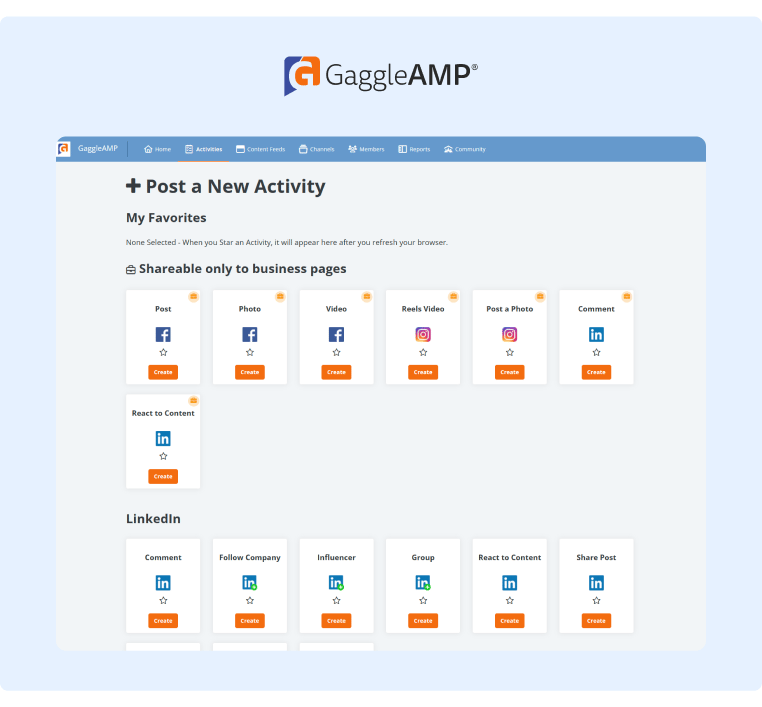
Then, you can fill it out with specific instructions, like a link to the post you want them to engage with. You can also set a deadline and assign points to that engagement activity (more on that later).
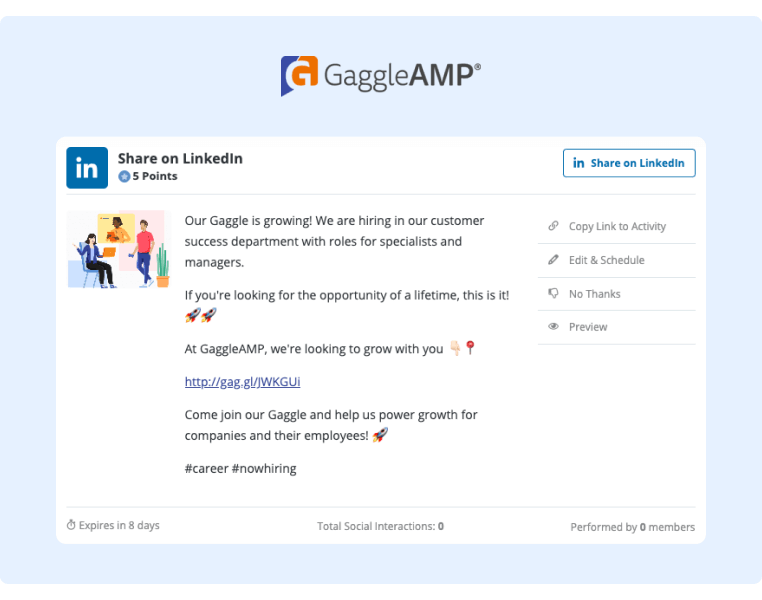
Next, you can assign it to a group of people (like your sales team) by selecting “Send to Member Groups:”
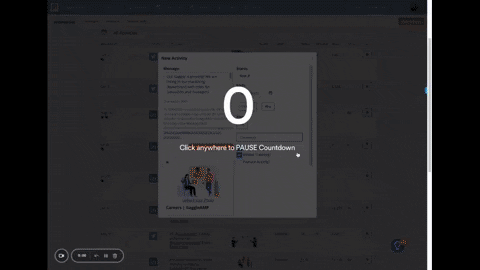
Pro-Tip: You can assign a single person to a member group should you regularly want to assign activities to specific people. This makes it super easy to assign relevant engagement activities to employees at scale.
Step 2: Employees Complete the Engagement Activities
When you assign an engagement activity, employees receive a notification (via Slack or email) and can click the link which will send them to their personal Gaggle.
Inside the Gaggle, they'll see all the activities you've assigned, along with the end date and any comments you added.
They can complete most engagement activities directly inside the Gaggle and schedule them to publish at a future time/date.
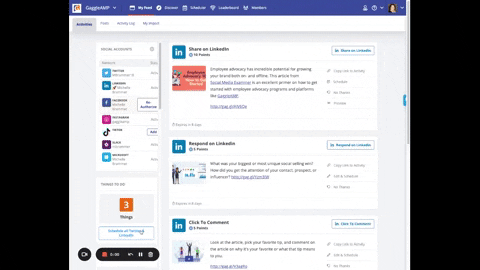
This system allows salespeople to spend just a few minutes once per week on social selling rather than logging into Linkedin several times per week to comment and share content.
As a result, they can spend more time talking to qualified prospects and still authentically build relationships with potential customers on social networks.
Step 3: Track Employee Engagement and ROI
Finally, GaggleAMP automatically tracks the following metrics:
-
EEMV (estimated earned media value).
-
Number of shares.
-
Total reach.
-
Number of social interactions.
-
Number of clicks.
These metrics make it easy to track which campaigns were most successful so that you can better optimize future campaigns. Additionally, you can finally tie an ROI to your social selling efforts.
GaggleAMP also has a leaderboard that tracks team member activity.
When you create an engagement activity, you'll see that you can assign points to each activity (on a scale of 1-5). As employees complete the activity, they receive those points. Then, GaggleAMP's leaderboard ranks employees by point totals:
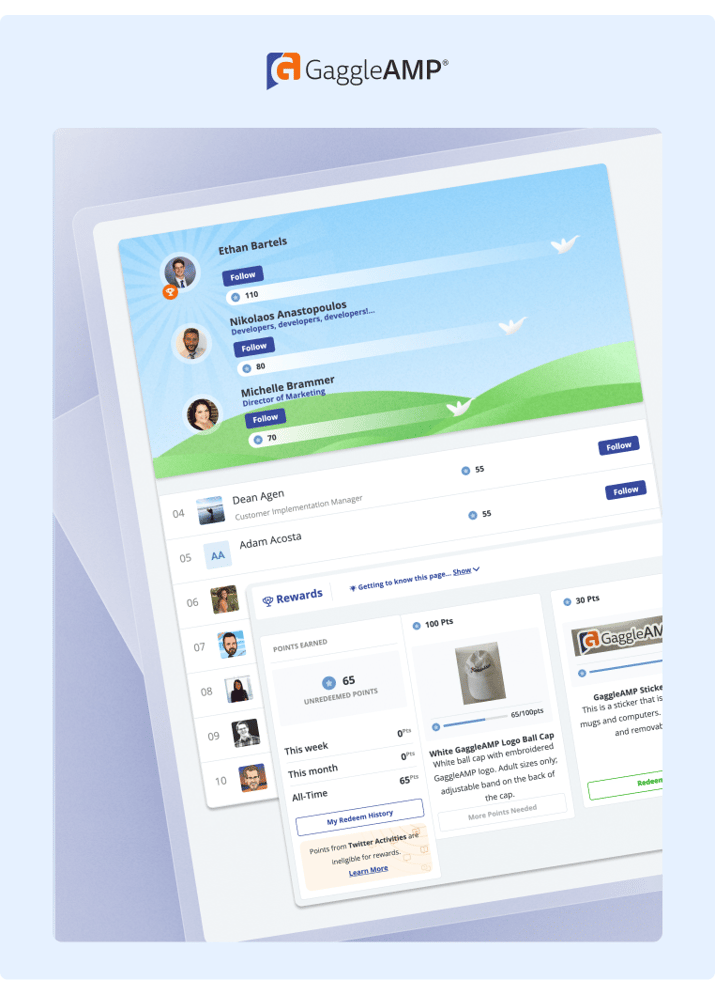
This point system encourages friendly competition among your team and further encourages employee advocacy.
It also makes it easy for you to reward the most engaged employees for their efforts.
What Makes GaggleAMP Unique?
GaggleAMP isn't the only social selling platform, but it's unique from other alternatives because it's the only platform that allows you to assign specific engagement activities to specific employees and then provides a personal dashboard with specific engagement activities for each employee.
Most employee advocacy tools let sales leaders send engagement requests to the team, but they can't assign specific social media posts or add instructions.
Instead, employees receive a generic engagement request, click the link, and are then presented with an overwhelming feed of all the company posts. Then, they have to choose a random post to promote.
There are a couple of problems with this:
-
Assembling the whole team to work together to boost one critical post is key to earning more organic reach. If each team member shares random posts, your social selling efforts won't be as effective.
-
Making employees choose a post to engage with and decide how to engage (like, comment, share, etc.) adds one more point of friction to the social selling process. While it may seem like a small task, this extra decision is enough to deter them from engaging.
GaggleAMP is also super easy to use for both sales leaders and teams. Onboarding requires minimal training and our team is always available to help you make the most of the platform.
In fact, our customer success team will even give you basic social selling training to optimize your social media sales strategy and see the best ROI possible.
See for yourself if GaggleAMP is the best social selling platform for your needs by scheduling a demo today!
Pricing
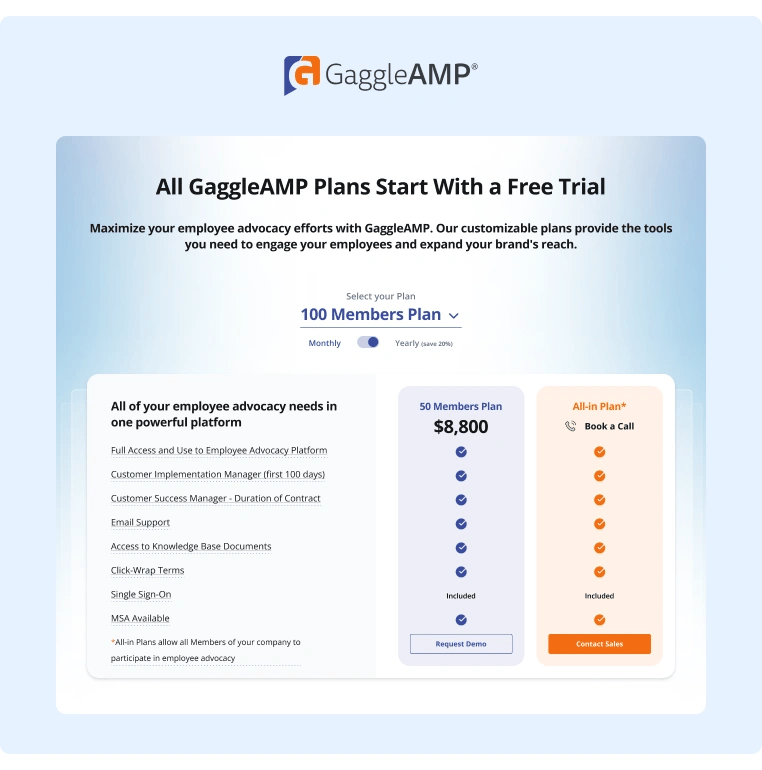
2. LinkedIn Sales Navigator – Best for Finding Specific Prospects
LinkedIn Sales Navigator can be a useful social selling tool, but most people only use it to cold pitch products and services.
We'll show you how the best social sellers use it to connect with prospects authentically, build trust, and ultimately close new leads.
When you first log into Sales Navigator, you'll see that you can search for companies or individuals and then make a list of ideal prospects.
The search filters are fairly advanced. In addition to basic filters like title, industry, years of experience, and geography, you can also search by connection level (1st, 2nd, 3rd), company revenue, company headcount, and more.
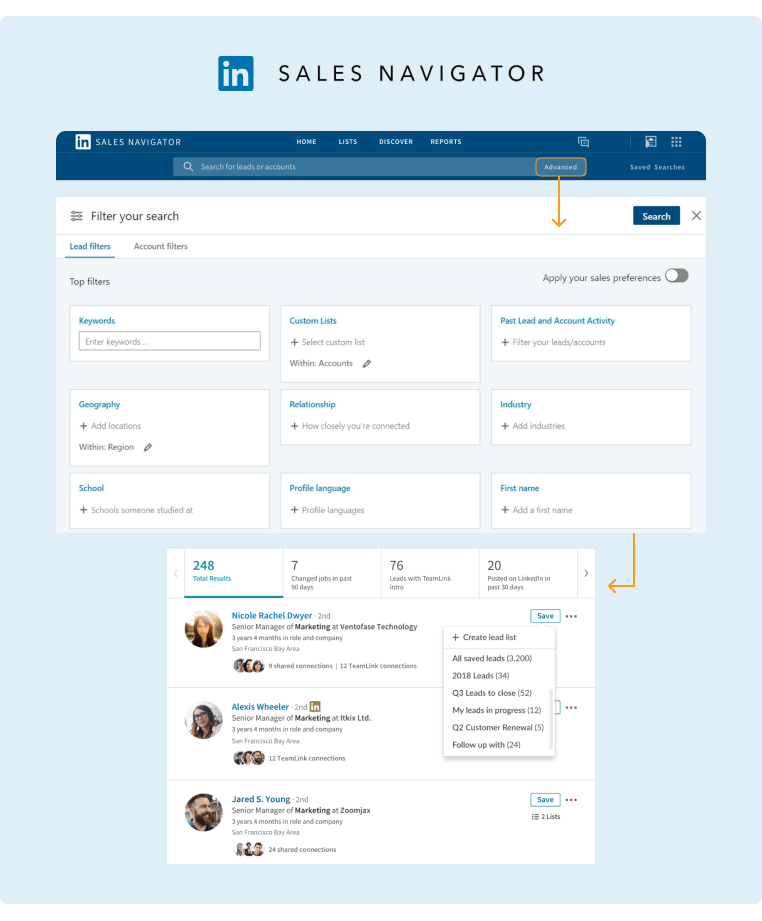
We find that the best way to use Sales Navigator for social selling is to use this four-step process:
-
Use the filters to identify key decision-makers at your dream companies.
-
Find a post they've published recently and leave an insightful comment on it.
-
Send a connection request mentioning that post.
-
Continue to create and share relevant content and ask your team members to help promote it.
Your prospects will see your content which helps build trust over time, and they'll likely reach out organically when they need your solution.
Alternatively, if you've engaged with this person for a few weeks and they haven't organically asked about your product or service, you can always send them the following message:
"Hey (name), I'm curious if you struggle with (pain point your product/service solves)? If so, let me know, as I might be able to help. Loved your recent post on (topic they recently posted). Do you think (follow up question to their post)?"
This template works well because:
-
You're approaching the potential buyer from a pain point first perspective. Instead of just pitching your product, you're asking if they need help.
-
Then, redirect the conversation back to them. This adds some flattery and shows that you're invested in their success.
-
The follow-up question strengthens this and shows that it's not just an automated email. The more insightful you can make that follow-up question, the better.
Notice that being on the receiving end of this message isn't annoying at all. On the contrary, it's flattering and shows you have a loyal follower.
LinkedIn Sales Navigator can be one of the most effective social network software solutions available if used correctly.
Pricing
Linkedin Sales Navigator has three pricing tiers:
-
Sales Navigator Core (Professional): $99/month.
-
Sales Navigator Advanced (Team): $149/month.
-
Sales Navigator Advanced Plus (Enterprise): starts at $1,600/year.
3. HubSpot – Best For Tracking Leads
HubSpot is one of the most popular CRM solutions available as it integrates with most tools and is easy to use.
It offers many features (one of our favorite is the AI Content Writer), and here’s how you can use it for social selling.
While social selling starts with building a relationship with your potential customers, you eventually want to track which prospects convert into customers and what touchpoints occurred in the sales funnel before they become customers.
Fortunately, HubSpot captures all of this data. For example, you can see specific emails they opened, web pages they visited, and more.
With this data, you can better optimize your social selling strategy, and the rest of your sales funnel to drive more B2B sales.
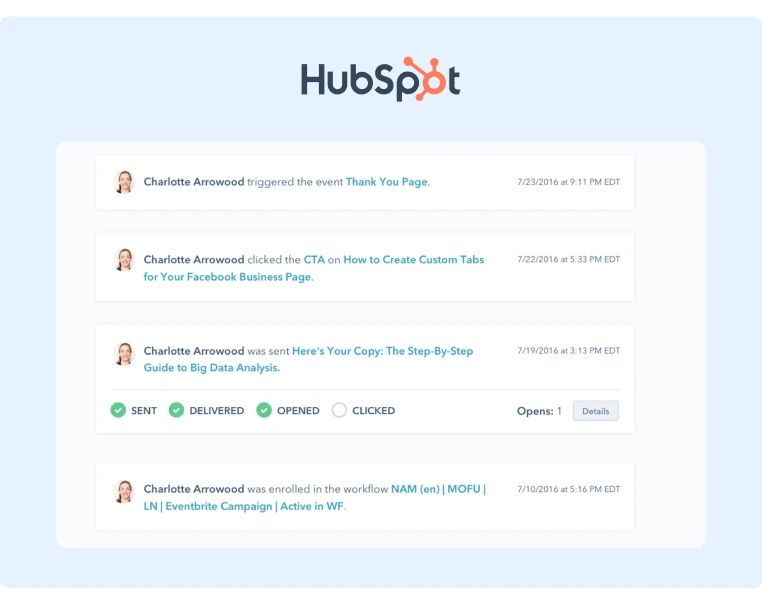
For example, if you notice that each lead that converts consumed a particular piece of content, you could share that piece of content on social media and have the whole team engage with it.
HubSpot's biggest competitor is Salesforce. While they offer many of the same features, we chose to include HubSpot because it offers a free version, is more affordable, and tends to be easier to use.
Pricing
HubSpot has many pricing plans (including a free version) for different use cases and products. Check out their full list of pricing options on their pricing page.
4. ManyChat – Best for Sending Automated Message Campaigns
ManyChat is a chatbot tool that lets you send automated chat messages on various social media channels.
While the key to an effective social selling campaign is authentically engaging with prospects, you can use chatbot automation to add value at the top of the funnel before transitioning the conversation to a team member.
For example, if you or another team leader create a post promoting a lead magnet, you can use a chatbot to deliver the lead magnet through an automated DM. In this case, your audience would prefer an automated message because they'd rather access the lead magnet immediately than wait for a human to send it to them.
Here's a great example of this in action:
In the last 90 days, we have booked 104 appointments via twitter DMs
— Jordan Ross (@jordan_ross_8F) February 11, 2023
During that time period, we've added $75,750 MRR to our business
I made a training on how we use humor to book calls via DMs so you can too
Like + comment "lol" and I'll send it
Must be following for DM pic.twitter.com/FI2xMhmvm3
You can also have the chatbot send a follow-up message a few days later to further the conversation.
The key is ensuring a human takes over the conversation when the prospect asks more specific questions that the chatbot can't answer.
There are plenty of chatbot tools available, though we found ManyChat has a slight edge over the competition for a few reasons:
-
ManyChat has additional e-commerce capabilities like payment acceptance, Shopify integrations, and abandoned cart sequences.
-
ManyChat offers an easy visual flow builder.
-
ManyChat offers a free trial and money-back guarantee.
Pricing
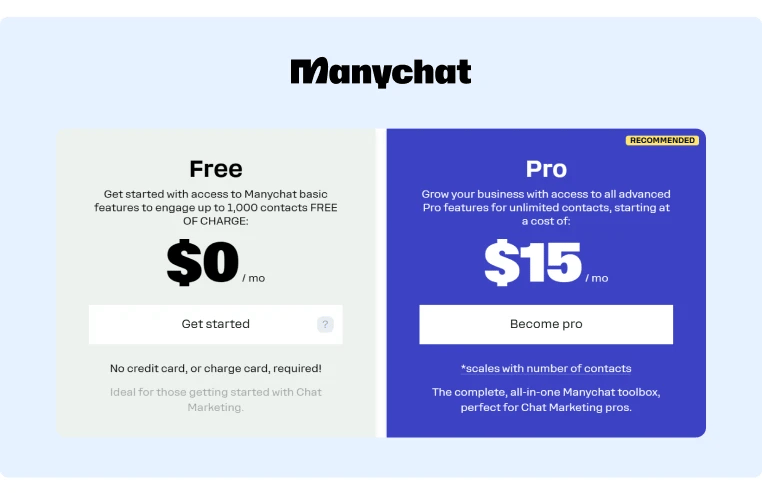
5. Buffer – Best for Scheduling Branded Content
Publishing consistency is critical to any successful social media marketing strategy, and one of the best hacks to ensure you remain consistent is to schedule branded content in advance.
While GaggleAMP lets your team members schedule their engagement activities in advance, Buffer is a great social software tool for scheduling branded content for the company page in advance.

You can schedule content across multiple platforms, including LinkedIn, Instagram, Facebook, Twitter, Google Business Profile, TikTok, and more.
It also lets you respond to comments and manage your general social media strategy from a single dashboard.
While there are plenty of different paid and free social media management tools, we chose Buffer because:
-
It's Simple and Easy to Use. Most other social media management platforms have many other features that many teams don't need. This makes it trickier to navigate, and you'll probably have to spend more time onboarding your team.
-
It's a Great Deal. Again, Buffer doesn't offer a full platform of robust social media features (most of which you'll never use), so they can offer a lower price than most alternatives.
Pricing
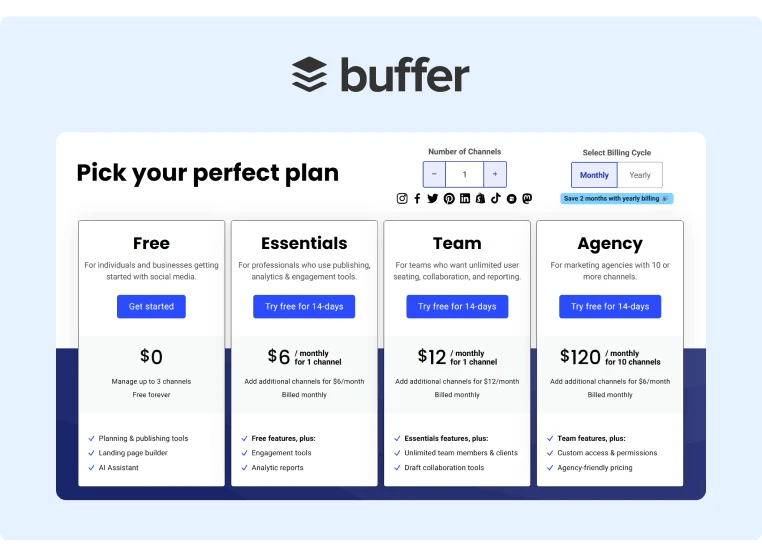
6. SparkToro – Best for Audience Intelligence
The first step in the social selling process is getting in front of your ideal target audience. It's helpful to know the following information about your audience:
-
Social networks they use.
-
Key influencers they follow.
-
Hashtags and keywords they use frequently.
Fortunately, SparkToro can help you find all of this information.
To use the tool, you can search a keyword, website, social account, hashtag, or even a particular person's social media profile (i.e., an ideal customer).
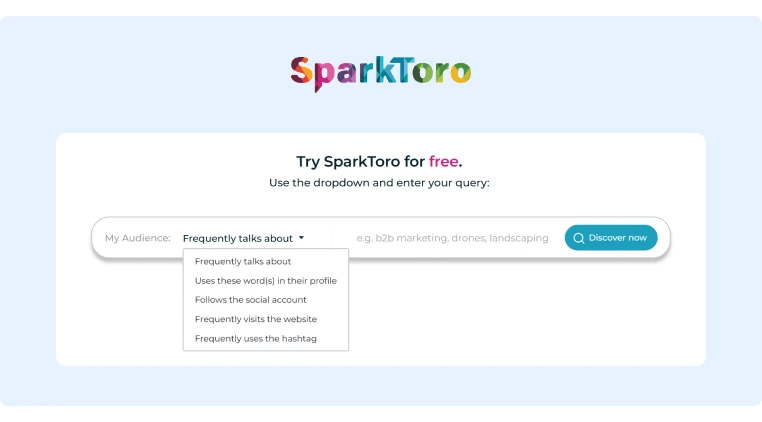
Then, SparkToro will give you a host of information about that audience, like hashtags they use, accounts they follow, frequently used phrases, and more.
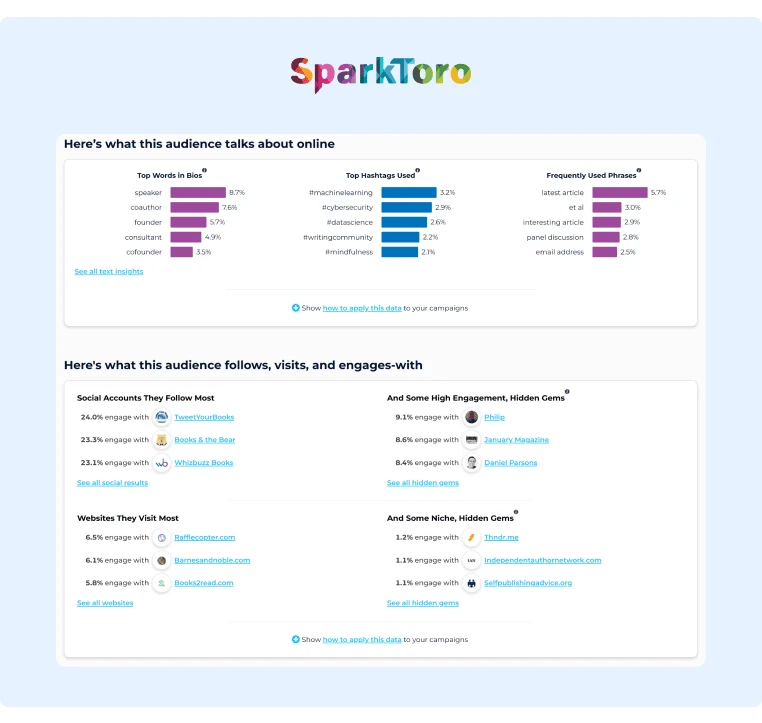
You can then use this information to inform your social selling strategy by:
-
Collaborating with the influencers they follow.
-
Following the hashtags and keywords they use with a social listening tool (then jump into relevant conversations to add value when appropriate).
SparkToro also offers plenty of other data to help your marketing team, like demographic information (top job titles, employer industries, etc.), websites they follow, podcasts they listen to, and more.
SparkToro is one of the few tools on this list that doesn't have any direct competitors. While some social listening tools offer similar features, none take SparkToro's unique approach by letting you search for an audience first.
Pricing
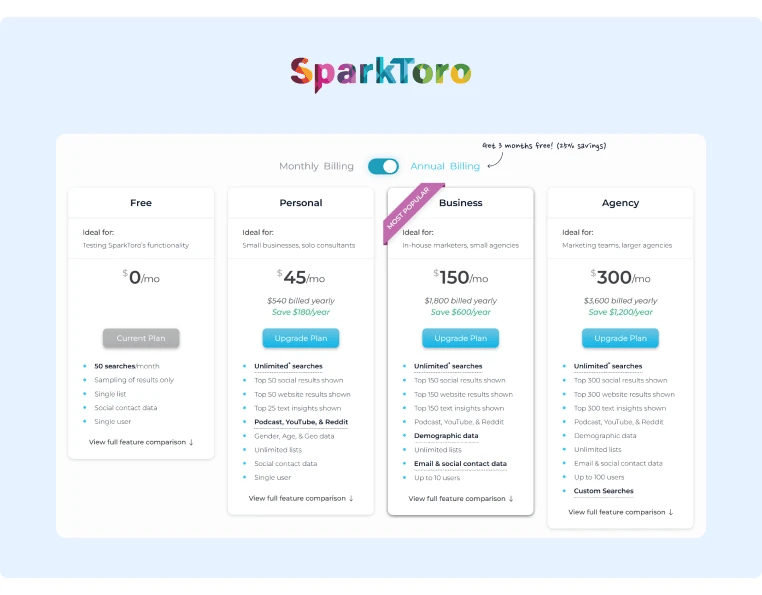
7. Slack – Best for Team Collaboration
Slack is a great tool for asynchronous, real-time communication.
Social selling is a team effort, and if someone has a question about an engagement activity or wants to keep the team posted on a particular lead, Slack is a great tool to message co-workers.
A few of our favorite Slack features include:
-
Status updates ("in a meeting," "on vacation," etc.).
-
Notification setting flexibility (turn them off or set working hours).
-
Easily create private team channels.
-
Automated reminders.
We also love that Slack integrates with almost all other tools in your tech stack. In fact, it even integrates with GaggleAMP so that your sales team can receive engagement activity notifications directly inside Slack.
Other benefits of using Slack include:
-
Slack offers more integrations.
-
Slack's user interface is slightly more user-friendly.
-
Users report that Slack tends to have fewer bugs.
Pricing
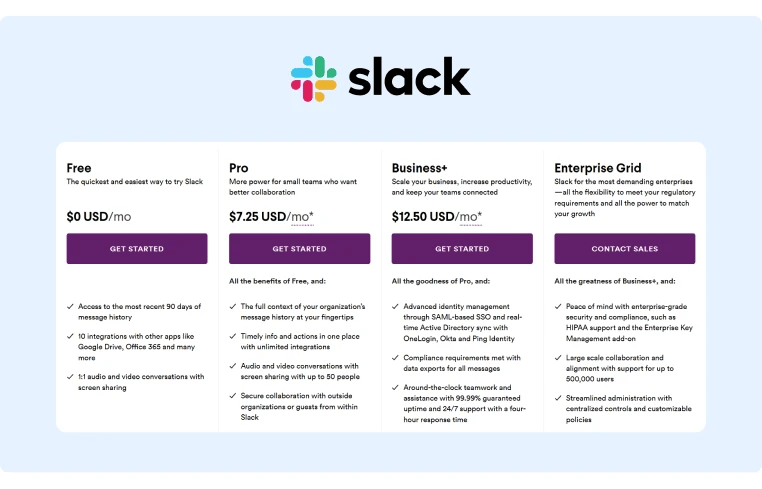
Choosing the Best Social Selling Platform for Your Needs
The social software examples above can all aid your social selling strategy.
However, we’ve found that the most successful social selling strategies unify team members to work together and boost each others’ content.
For this reason, we believe that GaggleAMP is the most effective social selling platform as it makes it easy for sales leaders to assign specific engagement activities to specific sales reps.
This way, employees aren’t guessing which posts they should engage with or how they should engage, and you can easily track the ROI of your social selling platforms.
To see for yourself how GaggleAMP can help your team hit its sales goals this quarter, schedule a demo today!










